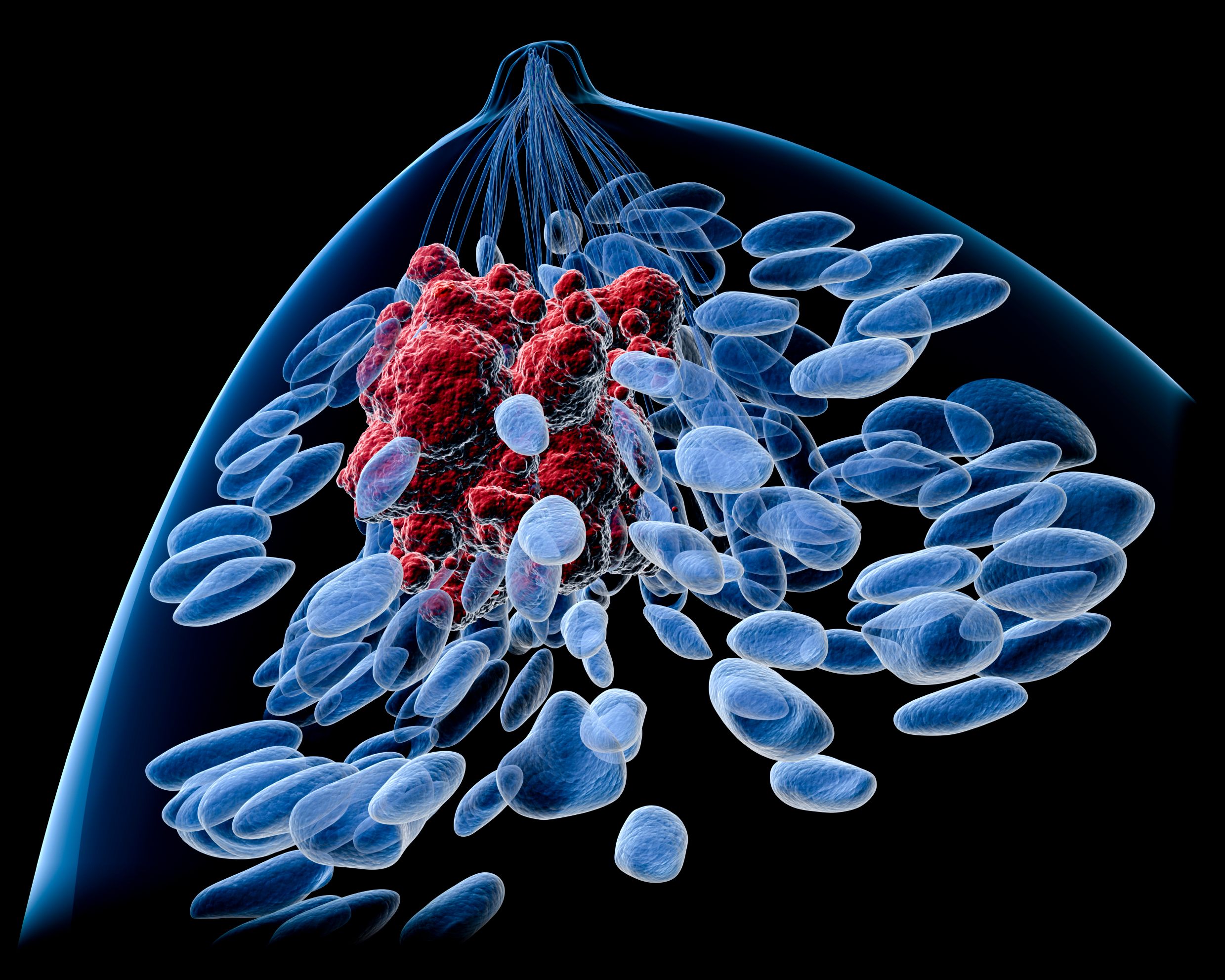Ribociclib and Endocrine Therapy Show Favorable PFS Trend in Breast Cancer
Data from the RIGHT Choice study showed that ribociclib/ET yielded efficacy benefits for luminal B/HER2E breast cancer vs combination chemotherapy.
Data from the RIGHT Choice study showed that ribociclib/ET yielded efficacy benefits for luminal B/HER2E breast cancer vs combination chemotherapy.

Results from a subgroup analysis of the phase 2 RIGHT Choice trial (NCT03839823) presented at the 2024 San Antonio Breast Cancer Symposium (SABCS) demonstrated that, for patients with the luminal B or HER2E subtypes of breast cancer, a treatment of ribociclib (Kisqali) and endocrine therapy elicits better progression-free survival (PFS) outcomes compared with combination chemotherapy.
There was also a more pronounced trend for PFS benefit from treatment with ribociclib plus endocrine therapy in patients with low baseline expression levels of immune-related genes.
“Contrary results in the [chemotherapy] arm suggest that these signatures warrant further studies on their potential predictive value,” the study authors wrote in the poster presented at the conference. “These data are hypothesis generating and should be interpreted with caution due to small sample sizes.”
In this analysis, there were 27 available samples from the ribociclib arm, of whom 22.2% were luminal A, 51.9% were luminal B, 22.2% were HER2E, and 3.7% were basal-like. Of the 22 available samples in the chemotherapy arm, 50.0% were luminal A, 40.9% were luminal B, and 9.1% were HER2E.
In patients with luminal A breast cancer, the median PFS in the ribociclib arm was 32.5 months compared with not reached (NR) in the chemotherapy arm (HR = 0.88; 95% CI, 0.20-3.91). For the other subtypes, median PFS in the ribociclib and chemotherapy groups were 38.0 months vs 21.7 months in luminal B breast cancer (HR = 0.64; 95% CI, 0.18-2.20), and 17.4 months vs 8.0 months in the HER2E subtype (HR = 0.23; 95% CI, 0.03-1.66).
Researchers also assessed median PFS in a group of patients with luminal B and HER2E subtypes of breast cancer, both of which are known to be linked with poor prognosis, according to the poster. In this group, the median PFS was 38.0 in those treated with ribociclib plus endocrine therapy compared with 18.4 months in patients treated with combination chemotherapy (HR = 0.58; 95% CI, 0.21-1.62).
In the group of patients treated with ribociclib, patients with a high ESR1 expression had a longer median PFS compared with patients with a low ESR1 expression (38.0 months vs 32.5 months; HR = 1.59; 95% CI, 0.20-12.44).
The analysis also included patients in the ribociclib group with a low expression of tumor inflammation or immune-related genes/cells, which included tumor inflammatory signature and T-cell expression. These patients had a longer median PFS vs those with a high expression of the tumor inflammatory signature (NR vs 11.4 months; HR = 0.17; 95% CI, 0.04-0.76) and T-cell expression (NR vs 10.3 months; HR = 0.2; 95% CI, 0.05-0.76).
In the chemotherapy arm, patients with low expression of immune-related genes/cells had a shorter median PFS compared with those with a high expression of tumor inflammatory signature (15.0 months vs NR; HR = 2.08; 95% CI, 0.62-6.93) and T-cell expression (12.8 months vs 18.4 months; HR = 1.8; 95% CI, 0.57-5.71).
There was a comparable and consistent trend in the PFS benefit for most other immune-related genes/cells expressions and signatures for low expression levels vs high expression levels. In addition, there was a higher PFS benefit for low gene expression in patients in the ribociclib arm, and a higher benefit related to PFS for high gene expression in the chemotherapy group.
Background and Design
In the phase 2 RIGHT Choice study, researchers enrolled pre- and post-menopausal patients with no prior systemic therapy for aggressive HR-positive, HER2-negative advanced breast cancer. Patients were randomized 1:1 to receive either ribociclib plus letrozole (Femara)/anastrozole (Arimidex) and goserelin or physician’s choice of combination chemotherapy.
This subgroup analysis included baseline tumor samples from 49 patients, which were micro-dissected and underwent gene expression with NanoString nCounter BC360 and PanCancer IO 360 panels. Researchers defined high and low baseline gene/signature expression levels as greater and less than or equal to the median level, respectively.
Previous findings from the RIGHT Choice study, which were published in May 2024, demonstrated a statistically significant median PFS benefit from first-line ribociclib plus endocrine therapy compared with combination chemotherapy (HR = 0.61; 95% CI, 0.43-0.87; P = .003) in patients with clinical aggressive HR-positive, HER2-negative advanced breast cancer.
Reference
Lu Y-S, Hsu C-L, Mahidin EIBM, et al. First-line (1L) ribociclib (RIB) + endocrine therapy (ET) vs combination chemotherapy (combo CT) in clinically aggressive HR+/HER2- advanced breast cancer (ABC): a subgroup analysis of RIGHT Choice by intrinsic subtype & gene & signature expression. Presented at the 2024 San Antonio Breast Cancer Symposium; December 10-13, 2024; San Antonio, TX. PS2-06.